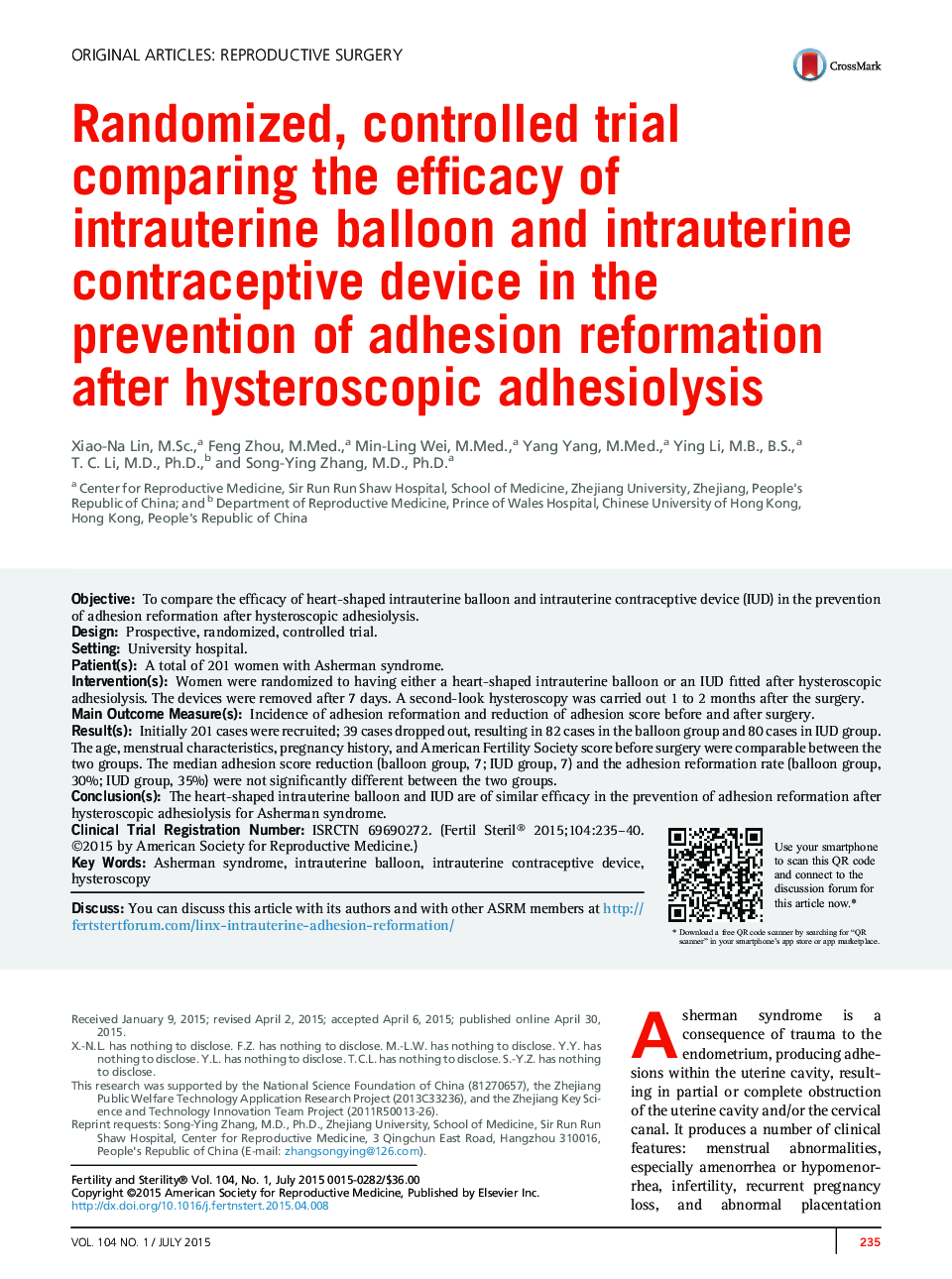| Article ID | Journal | Published Year | Pages | File Type |
|---|---|---|---|---|
| 3934096 | Fertility and Sterility | 2015 | 6 Pages |
ObjectiveTo compare the efficacy of heart-shaped intrauterine balloon and intrauterine contraceptive device (IUD) in the prevention of adhesion reformation after hysteroscopic adhesiolysis.DesignProspective, randomized, controlled trial.SettingUniversity hospital.Patient(s)A total of 201 women with Asherman syndrome.Intervention(s)Women were randomized to having either a heart-shaped intrauterine balloon or an IUD fitted after hysteroscopic adhesiolysis. The devices were removed after 7 days. A second-look hysteroscopy was carried out 1 to 2 months after the surgery.Main Outcome Measure(s)Incidence of adhesion reformation and reduction of adhesion score before and after surgery.Result(s)Initially 201 cases were recruited; 39 cases dropped out, resulting in 82 cases in the balloon group and 80 cases in IUD group. The age, menstrual characteristics, pregnancy history, and American Fertility Society score before surgery were comparable between the two groups. The median adhesion score reduction (balloon group, 7; IUD group, 7) and the adhesion reformation rate (balloon group, 30%; IUD group, 35%) were not significantly different between the two groups.Conclusion(s)The heart-shaped intrauterine balloon and IUD are of similar efficacy in the prevention of adhesion reformation after hysteroscopic adhesiolysis for Asherman syndrome.Clinical Trial Registration NumberISRCTN 69690272.
